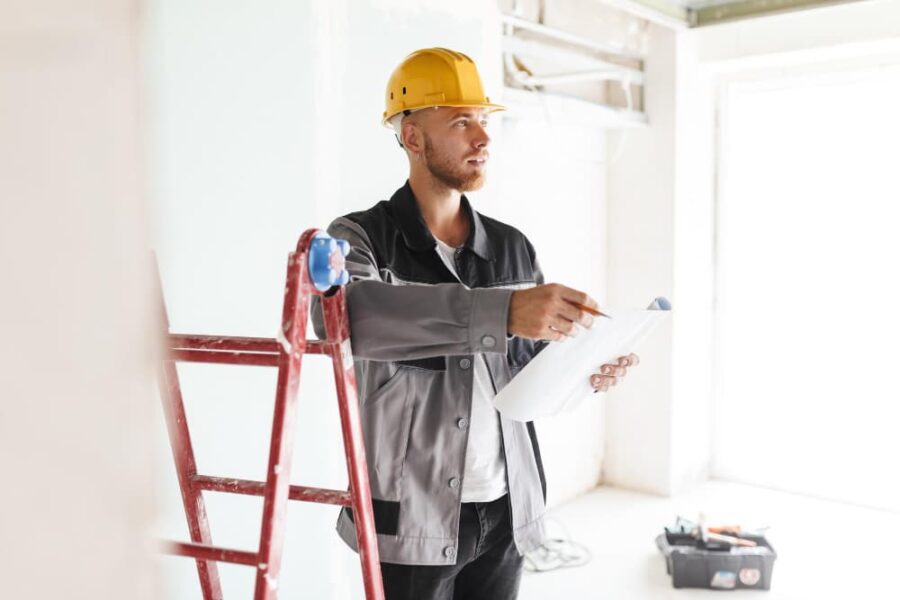Are you thinking of starting with a new building project? Well, this guide will help you with all the essential steps to ensure your project will stand out as per your expectations. Doesn’t matter if you are pursuing the project from your self-preference or a selling POV later. It has to have stand-out features in its design.
We live in a world where people always try to outdo each other in competition. Therefore, you will face financial difficulty if the infrastructure cannot attract investors.
When starting a construction project, knowing how reputable and good the company is is important. A company’s experience and expertise should be relevant. So, let’s look at all the steps to consider when you’re just starting your commercial construction project.
Construction Process for Commercial Buildings
Here are the essential steps for starting the commercial construction rolling out.
Phase I: Development and Planning
In commercial construction, the development and planning phase is the first step. Setting up a budget, identifying the project’s scope, and determining its timeline are all part of this process. Start with a feasibility study to see if the project will work.
This phase involves collaborating closely with the client to determine their needs and preferences.
1. An evaluation of feasibility
In the development and planning process, a feasibility study is extremely important. This involves evaluating the project’s feasibility based on different factors, such as its environmental impacts, economic viability, legal and regulatory requirements, and resource availability.
This study aims to determine if the project is feasible within the client’s budget and timeline, as well as whether it can be completed within that budget.
2. Setting up a budget and creating a schedule
Following the completion of the feasibility study, the construction team sets the budget and timeline for the project. The project’s cost is established as part of this process, and funds are allocated for various components such as materials, labor, and equipment.
Scheduling the multiple construction phases and determining the start and end dates are part of the timeline.
Phase II: Designing
It is now time for the next phase of commercial construction, which is the architectural design. In this process, the purpose is to map out the layout of the building, to size it, and to arrange the rooms inside it.
There is also a preliminary phase of the project that involves the construction team working with architects and engineers to create a blueprint for the project.
1. Blueprint Development
There is a lot of reliance on the blueprint for designing. In other words, it is about the layout, the size, and the look of the project that matters. In the construction industry, blueprints are used to visualize the final product and identify potential problems that might occur during the process.
2. Approvals and permits
It is necessary to obtain several permits and approvals before construction can begin to start the work.
There is a requirement that all licenses and permits must be obtained from the local government, and the project must comply with all legal and regulatory requirements as well.
Phase III: A phase of construction
During the construction phase, the most critical decisions are made. In this stage, the actual structure of the project is constructed, including the excavation, foundation, framing, and finishing.
1. A little digging and a little foundation
An excavation is the process of removing soil to lay a building’s foundation. A foundation is then built, which supports the entire structure of the building.
2. The framing process
Once you’re done with the foundation, you can start framing. Framing is like making the building’s walls, floors, and roofs. This phase involves the installation of plumbing, electrical, and HVAC systems.
It is crucial to have a skilled and experienced installation team to ensure the building plans are followed.
3. A finishing touch
This step involves installing drywall, applying paint to walls, applying flooring lighting, and adding various other fixtures as part of the finishing process.
Achieved Outcome:
In commercial construction, the client’s requirements and preferences are met in a completed project. During the building inspection, the inspector meets all legal and regulatory requirements.
Afterwards, the construction team hands over the building to the client, who can use it immediately.
Conclusion
To conclude, commercial construction involves the construction of properties to do business. The complete commercial construction process involves careful planning, design, and construction from the planning and design phase through the inspection and final touches.
To ensure the success of commercial construction, the industry requires the expertise of professionals.
